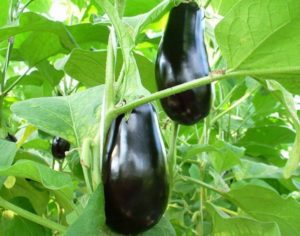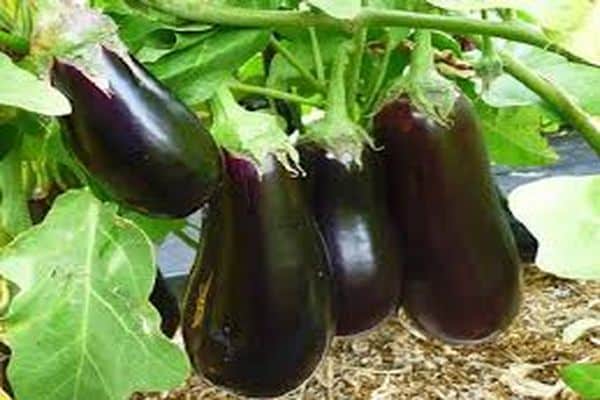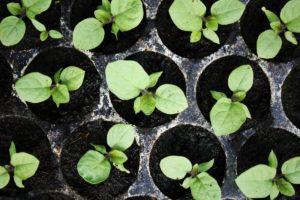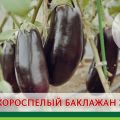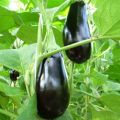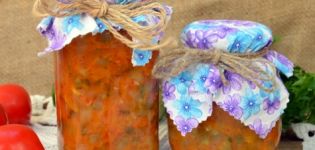Description of the Clorinda eggplant variety, its characteristics and yield
When choosing seeds, gardeners give preference to early maturing varieties with high yields. Many Dutch breeding hybrids fit these requirements. A new variety of eggplant, Clorinda, deserves special attention. The plant is resistant to cold snaps, has long fruiting, is not susceptible to viral diseases. The fruits are distinguished by their high taste.
Description and characteristics of the variety
Clorinda is a mid-season variety with a long fruiting period. Suitable for outdoor cultivation.
Description:
- lilac stems with a strongly pubescent surface;
- leaves with jagged edges, medium size;
- the first crop is harvested 100-110 days after sowing the seeds;
- the bushes reach 80 centimeters in height. In the greenhouse - 90 centimeters;
- in din, the fruits reach a maximum of 20 centimeters with an average weight of 320 grams. Separate specimens weighing 1 kilogram come across;
- bushes are of the upright type, semi-spreading;
- the flesh is white, firm. Differs in wonderful taste without bitterness;
- fruits are oval, less often pear-shaped. The rind is dark purple in color, glossy;
- the seeds in the pulp are contained in minimal quantities.
Specifications:
- bears fruit for a long time;
- the variety is universal. Gives a rich harvest in open ground and in greenhouses;
- high-yielding variety. Up to 3.8 kilograms of fruit are harvested from a square meter in a greenhouse. Outdoors - up to 2.8 kilograms;
- cold-resistant bushes. Fruits are set even in bad weather conditions;
- resistant to tobacco mosaic virus.

Pros and cons of Clorinda eggplant
Gardeners choose the variety for its many positive qualities. Of these, there are:
- large, tasty fruits;
- bushes differ in power;
- high productivity;
- good fruit formation in cold weather conditions;
- resistance to disease.
Disadvantages:
- Clorinda belongs to hybrids, so the collected seeds are not suitable for planting next season;
- overripe specimens can be harmful to health. The fruits contain a large amount of a poisonous substance - solanine, which leads to poisoning of the body. This substance is also found in unripe eggplants, but in smaller quantities. It is not recommended to eat raw vegetables. During heat treatment, hazardous properties disappear.
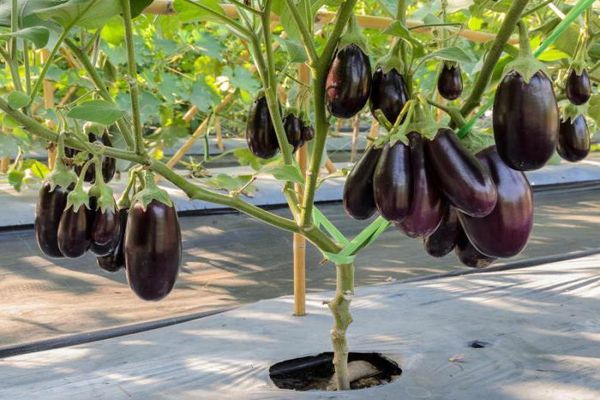
Eggplant growing rules
The variety is grown by the seedling method.Sprouts do not tolerate sudden temperature changes, therefore, it is possible to plant directly into the ground only in warm climates.
Landing dates
For the subsequent growth of seedlings in a greenhouse, seeds are planted in the last decade of February. For open ground - until mid-March.
Soil preparation
For seedlings, you need to prepare the substrate:
- 6 parts of peat;
- 0.5 parts of sand;
- 2 parts compost;
- 1 part turf.
You can also use a primer sold in specialized stores.
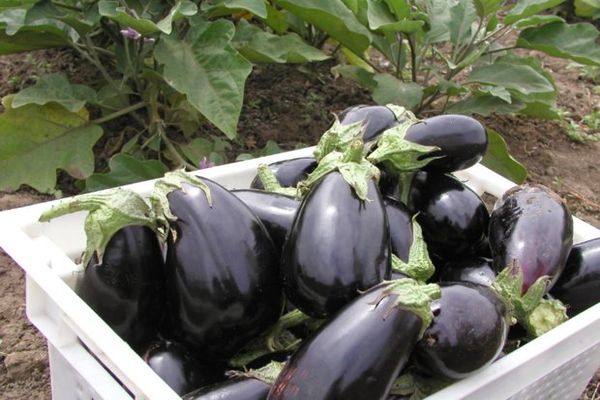
The soil for seedlings can be prepared in advance in the fall and stored at sub-zero temperatures. Freshly harvested - will have to be calcined in an oven for disinfection and elimination of pathogens.
Planting seeds
Eggplants react negatively to diving. Therefore, for planting, they stop choosing small containers.
Landing rules:
- Pour soil into containers and moisten.
- Deepen the seeds by 1 centimeter.
- Sprinkle on top with a layer of peat.
- Cover the container with foil. Leave at +25 degrees.
- Water with settled water. The next watering is carried out after the soil is dry. The plant reacts negatively to waterlogging.

If all conditions are met, the first shoots will appear in 1.5-2 weeks.
Seedling conditions
The film should be removed as soon as sprouts appear. The containers are placed on the windowsill.
Conditions for proper development:
- daytime temperature - 20-25 degrees. Night - 16-18 degrees;
- moderate watering;
- regular supply of fresh air;
- draft protection;
- daylight - 12-14 hours. In the dark, they are illuminated with phytolamps.
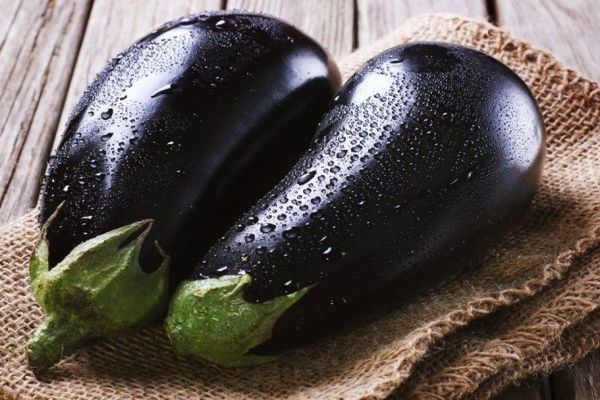
Landing in the ground
In the southern regions, the transplant is carried out in April, early May. In cooler areas, they are planted from mid-May. The survival rate of the bushes will improve preliminary hardening. The bushes are put on the balcony for a couple of hours, then the time is increased... In this way, the seedlings will get used to the change in temperature and the sun's rays.
It is necessary to transplant into the dug ground. Digging is desirable in the fall.
Soil preparation rules:
- To get rid of infections, the soil is spilled with a prepared solution. Add 5 grams of copper sulfate to a ten-liter bucket.
- Digging up the ground. During the autumn digging, organic fertilizers are applied.
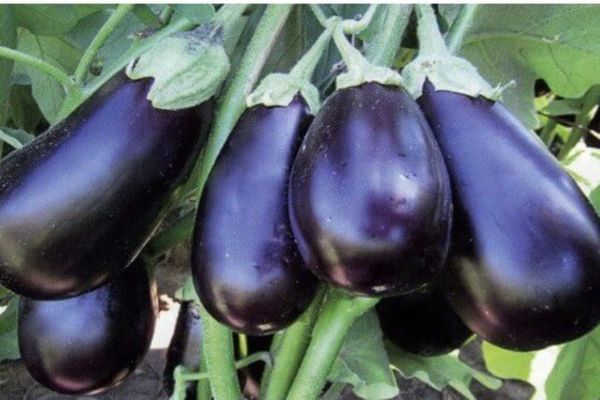
Seedlings are not recommended to be planted in the place where they grew:
- eggplant;
- tomatoes;
- pepper;
- potato.
Seedlings with 8-10 leaves are suitable for transplanting.
Transplant process:
- Prepare pits 20 centimeters deep. The distance between the landings is 30 centimeters.
- Prepare a weak solution of potassium permanganate. Pour a liter of the prepared liquid into each hole.
- Without breaking the earthen lump, remove the plant from the container and lower it into the hole.
- Sprinkle with plenty of water and sprinkle with loose soil.
How to care for eggplant
After transplanting, the bushes will take 2-3 weeks to take root.
Watering
The variety belongs to moisture-loving crops, therefore, in order to get a bountiful harvest, you will need regular watering:
- after transplanting, the plant is not watered for a week. This helps the bushes to adapt more easily to new conditions;
- until fruiting, watered in moderation once a week;
- during the formation of fruits, the intensity of watering must be increased;
- in hot weather, watering is increased to twice a week.
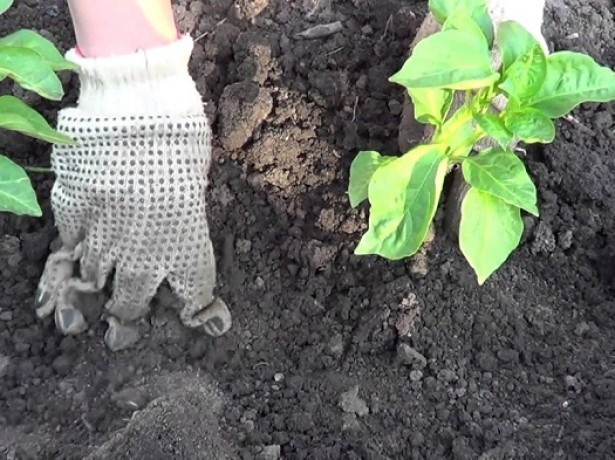
Water is used standing, with a temperature of about +25 degrees... After each watering, it is recommended to loosen the soil to avoid crusting on the surface.
Fertilizer
Top dressing will need to be applied every 3 weeks.
Fertilizer options:
- 15 liters of water, 1 liter of slurry;
- 5 grams of potassium sulfide, 10 urea, 10 liters of water, 10 grams of superphosphate;
- 10 liters of water, 250 grams of ash;
- spraying the bushes with a weak solution of boric acid;
- 10 liters of water, 20 grams of ammophos.
During fruit ripening, the concentration of phosphorus and potassium increases. These substances are needed for a strong root system and improving the taste of the vegetable.
Bush formation
The variety is sensitive to pruning and pinching, so there is no need to form a bush.

If you need a compact bush, then you cannot do without these operations. Follow the recommendations:
- systematically pick off yellow leaves;
- remove the upper growth point at a height of 30 centimeters;
- leave no more than 6 strong lateral shoots.
It is recommended to tie the bush to a support.
Soil care
During the entire period of growth and fruiting, you will need to loosen the soil after each watering and remove weeds.
Diseases and pests
Bushes can infect diseases:
- blackleg. To prevent, the soil is treated with wood ash and bleach;
- various types of rot. Treatment with fungicides helps to cope with them;
- viral. In order not to infect healthy bushes, the affected plants must be removed.
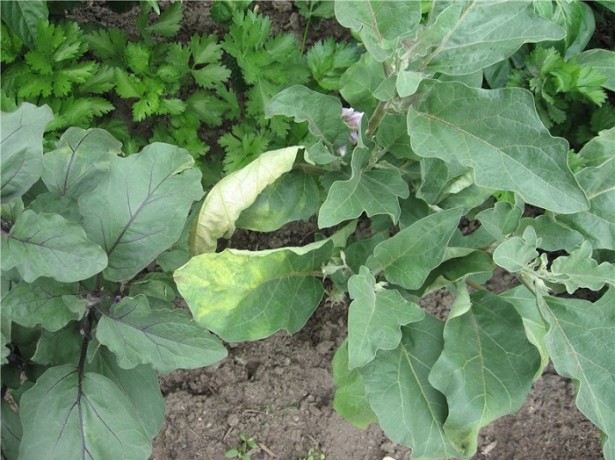
Possible pests:
- aphid;
- spider mite;
- Colorado beetle;
- whitefly.
Treating the bushes with insecticides will help to cope with insects:
- Aktara;
- Fitoferm.
After the appearance of the ovaries, chemical treatment is prohibited.
When and how to harvest
The main sign of maturity is a rich, dark purple hue. The fruits are harvested after reaching technical maturity. A pruner is used for cutting. The remaining ripe eggplants on the plant will reduce the number of ovaries.
Storage rules
Fruit retains its commercial properties for 2 months when stored in a room with a temperature of +7 degrees.
